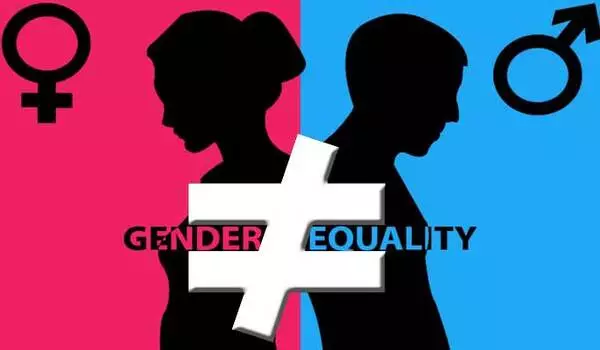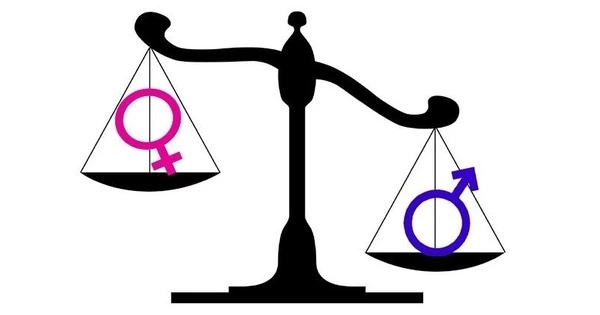Since 1970, women have made progress in earning college degrees, as well as in pay and in occupations previously dominated by men – but the pace of progress in many areas associated with professional advancement has slowed in recent decades and stalled in others, according to a new five-decade analysis.
“Significant progress has been made toward gender equality in employment and earnings, as well as in women’s access to certain fields of study and professions since 1970,” says Paula England, senior author of the study and a professor of sociology at New York University. “However, progress toward gender equality has slowed, and in some cases has completely stalled.”
The research, “Is the Gender Revolution Coming to an End? A Refresher, “appears in the journal Proceedings of the National Academy of Sciences and discovered that progress toward gender equity slowed or stopped in the 1990s after accelerating in the 1970s and 1980s.
“Early changes were like picking low-hanging fruit — the most obvious barriers were removed, and plenty of women jumped at the new opportunities,” England observes. “Further progress will necessitate more profound cultural and institutional change.”
The slowdown on some indicators and stall on others suggests that further progress will necessitate significant institutional and cultural change. Progress may necessitate increased male participation in household and care work, government-funded child care, and employer adoption of policies that reduce gender bias and assist both men and women in balancing work and family care responsibilities.
Paula England
The analysis, which was co-authored by NYU doctoral candidates Andrew Levine and Emma Mishel, examined data for the years 1970 through 2018 from the U.S. government’s Current Population Surveys and American Community Surveys, as well as from the National Center for Education Statistics. Among the NYU research team’s findings were the following:
- Women’s employment (women aged 25 to 54) rose steadily from 1970 to 2000, moving from 48 percent employed in 1970 to 75 percent employed in 2000. In subsequent years, it declined, plateaued, and then declined more in the Great Recession (2008-2010), reaching a bottom of 69 percent, before rebounding to 73 percent in 2018.
- Men’s median hourly earnings (in constant 2018 dollars) were approximate $27-28/hour in the 1970s, then fell to below $23/hour by the mid-1990s. Since then, the median went up in the late 1990s, declined during the Great Recession, and rebounded some since. But it has always been between $22 and $25/hour since the mid-1990s. During this same period (1970-2017), women’s median earnings have always been lower than men’s. In the 1970s, they were stable at about $17/hour. They began to rise in the early 1980s and continued to do so for the rest of the decade; median earnings also rose in the late 1990s and early 2000s. Since then, they have been fairly flat at about $20/hour.
- The ratio of women’s to men’s median hourly earnings was fairly stable at approximately .60 in the 1970s, then increased dramatically in the 1980s to .74. The ratio has shown a net rise in each decade since 1990, but at a much slower rate than was observed in the 1980s. By 2018, women earned 83 percent of what men did at the median earnings level. In percentage points, the rise in the past three decades (1990 to 2018) was less than it was in the single decade of the 1980s.
- For baccalaureate degrees, 76 percent as many women as men got undergraduate diplomas in 1970-71; by 2015-16, women were outpacing men, with 34 percent more women than men getting bachelor’s degrees. Similarly, only 13 percent as many women as men received doctoral degrees in 1970-71; in 2015-16, 18 percent more women than men were getting doctorates.
However, despite educational gains, occupations still show notable levels of segregation – meaning that some occupations are mostly men while others are mostly women. But, such segregation has declined in recent decades. To gauge this, the researchers examined different women’s and men’s distributions across occupations, dividing all jobs into approximately 70 categories. Among occupations in the analyses were managers, engineers, natural scientists, K-12 teachers, retail sales workers, secretaries, police, firefighters, and farmers.

The researchers calculated the index of dissimilarity for the occupational categories, an index in which 0 signifies no segregation and 1 constitutes total segregation. The researchers’ analysis showed that segregation of occupations has fallen steadily since 1970, moving from .60 to .42. However, it moved much faster in the 1970s and 1980s than it has since 1990: segregation dropped by .12 in the 20-year period after 1970, but by a much smaller .05 in the quarter of a century after 1990.
Women and men earning degrees in different fields contribute to occupational segregation in fields requiring a college degree. To assess how much the segregation of fields of study has changed, England and colleagues examined national data from the National Center for Education Statistics, which classifies the fields in which people get degrees into 17 broad categories, including biology, business, journalism, computer science, education, engineering, English, psychology, social sciences, and arts.
The type of baccalaureate degrees men and women got reveals persistent, though declining, segregation. For undergraduate degrees, the segregation index has dropped from .47 in 1970 to .33 in 2015, but the drop was not continuous – segregation declined until it reached .28 in 1998 and has come up again slightly since. For doctoral degrees, the index moved from .35 in 1970 to a low of .18 in 1987 and has not gone lower since – in fact, it has risen slightly. Thus, desegregation of both levels of degrees has stalled for 20 or more years.
This persistent segregation is significant because, as the researchers point out, for the one-third of adult Americans with a baccalaureate degree or higher, occupation and earnings are heavily influenced by their field of study.
















